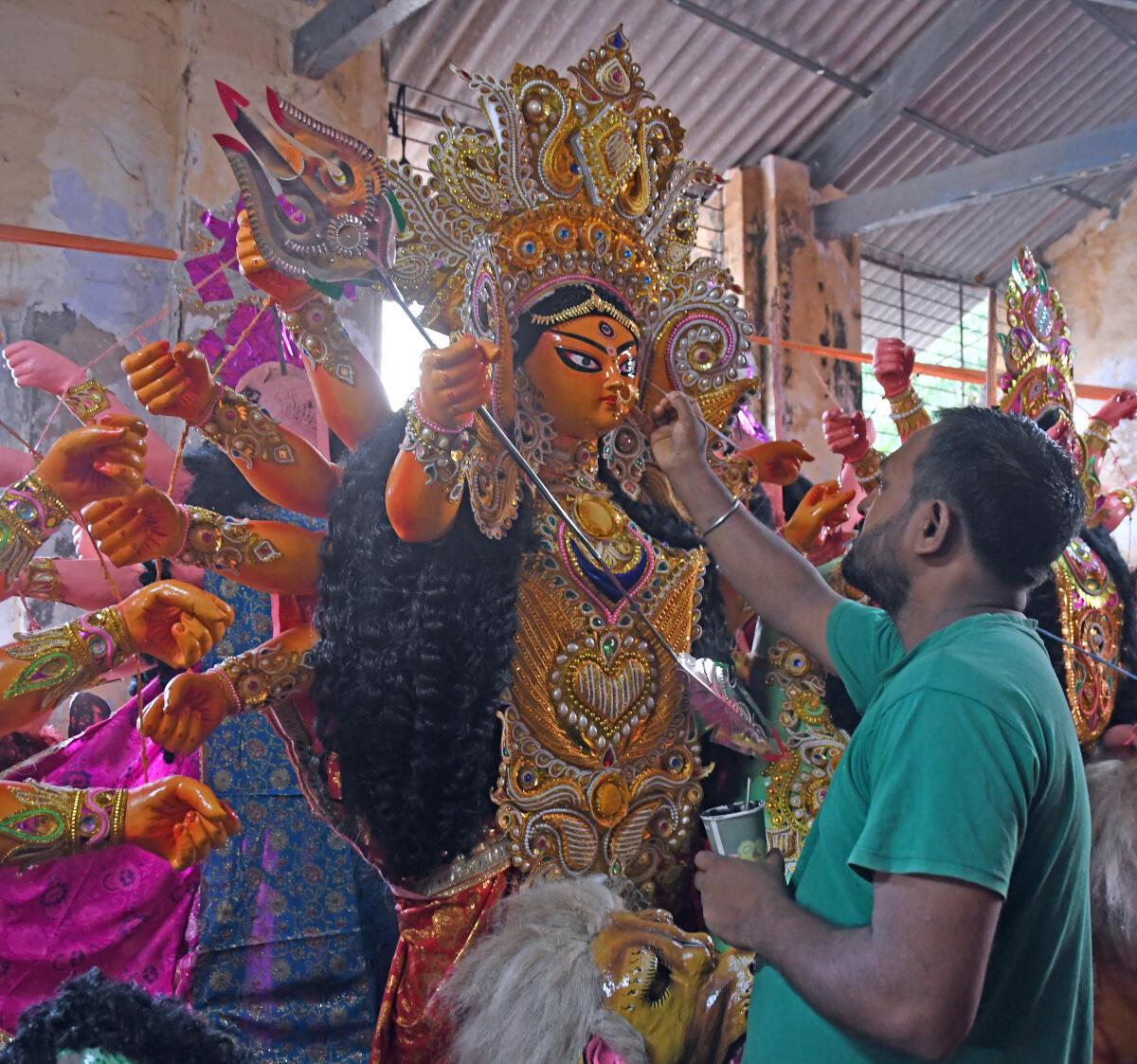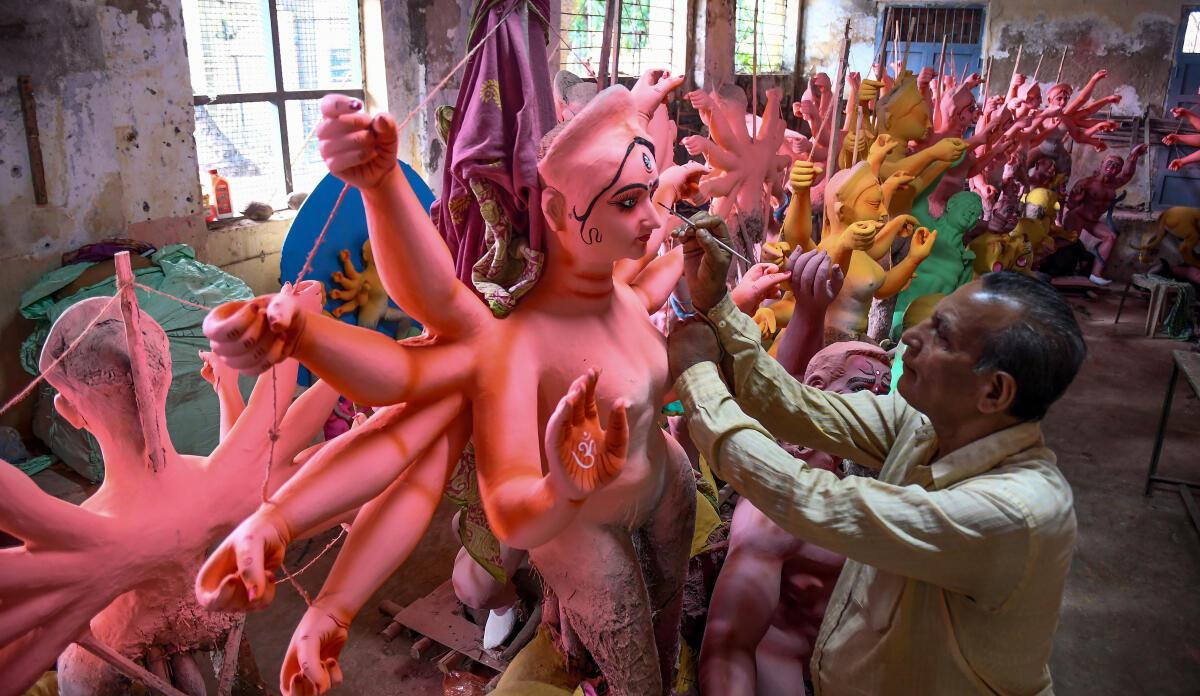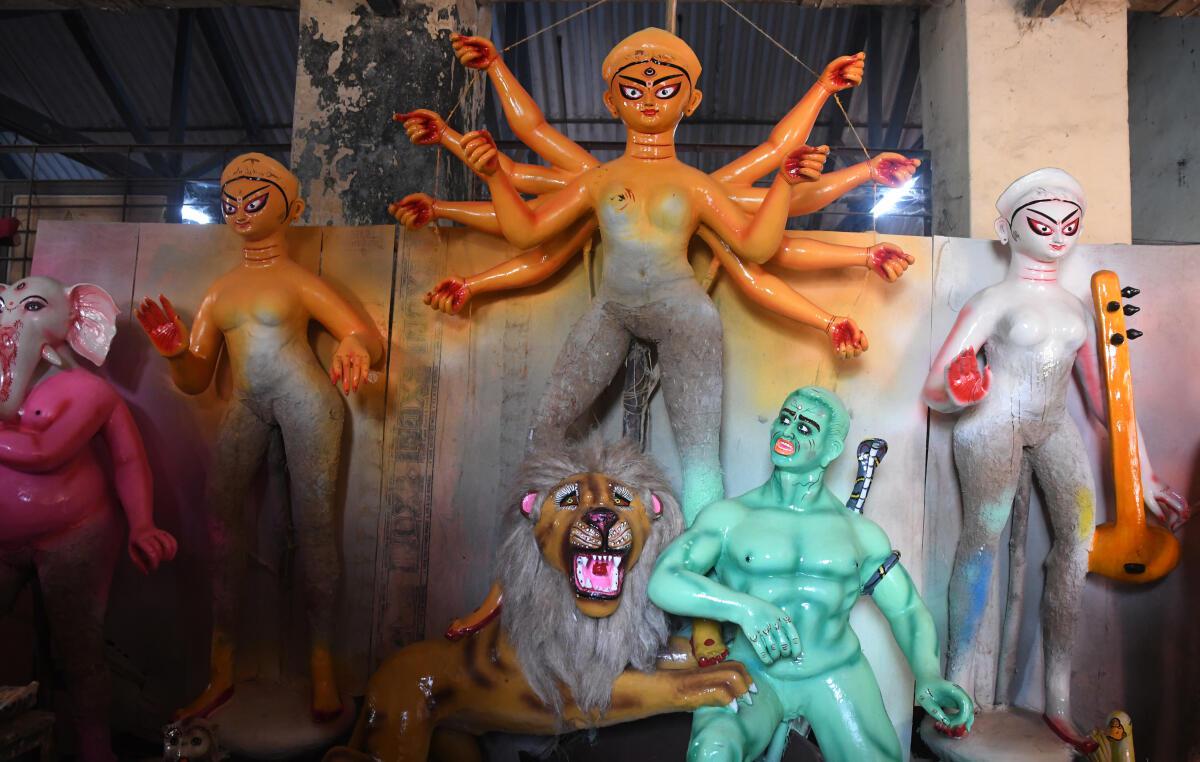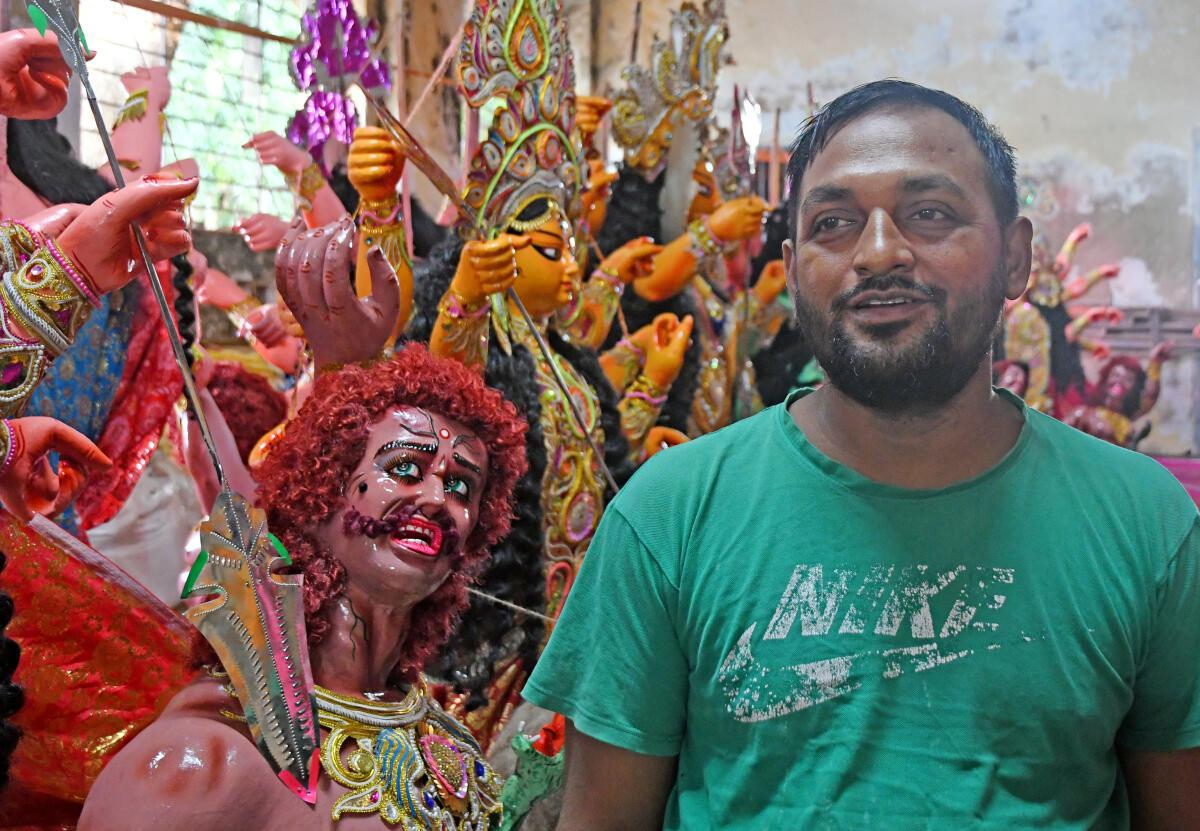Kishori gives finishing touches to an idol
| Photo Credit: R Ragu
Artist and sculptor Kishori Mohan Pal’s averted gaze, ringed with the heaviness of age, is eloquent even in silence. “For 40 years I have been sculpting Ma Durga’s idol. It is a gift to be able to enjoy this nearness to the deity. Yet, in these four decades, I have never witnessed what Durga Puja is like in my city Kolkata,“ recollects a smiling Kishori.

Rinku works on Durga’s visage
| Photo Credit:
Jothi Ramalingam
Kishori, a resident of Kalighat in Kolkata, has been sculpting idols since 1982. In May, months ahead of Durga Puja (usually held in late September/October), Kishori arrives with a community of artists in Chennai. The bejewelled idol that we see in pandals is an indissoluble chunk of history that forms the lived histories of artists like Kishori.
The senior artist and his team spend the gruelling months of summer in Chennai laying out the groundwork that goes into making the goddess. With him, he brings alluvial soil extracted from the river Ganga in Kolkata, hay, Durga’s saree, wood, twine, jute fibres, bamboo, paint, and the frame or kathamo of the idol.

Kishori at work on one of the idols
| Photo Credit:
Velankanni Raj
Kishori’s son and fellow artist Rinku Pal explains, “We don’t use laal mati or red clay to make the idol. We use Ganga maati or the soft alluvial soil from the river. First, we tightly bind the straw together and then cast it with the clay and subsequently, it is sculpted.”
The making of the idol takes more than three months. The process sees the making of more than 30 idols that vary in terms of decoration, appearance, colour, and material used.

A green asura is typically seen in traditional pujas
| Photo Credit:
Jothi Ramalingam
Kishori points at a 13-feet tall Durga and says, “You see the asura here? This is the only one which has been painted green.” He goes on to add, “A green asura symbolises envy and evil and is seen mostly in traditional sabeki pujas of Kolkata. In the holy texts it is categorically mentioned that the asura ought to be green.“
Most Durga idols are embellished according to two kinds of saaj (decorations)says Kishori. One being the daaker saaj, associated with traditional household pujas hosted by zamindars (land owning gentry). It is made from silver foil and spruced up with silver sequins – these materials were unavailable in colonial India and had to be brought to the city by post (daak) from Germany.
The other version, shola, is an ivory-white material that grows aplenty in South Asia – derived from the pith of a plant called shoal that grows in swampy areas. This decoration has a more egalitarianism association owing to its easy accessibility and habitual usage.

Rinku stands alongside one of his creations
| Photo Credit:
Jothi Ramalingam
Talking about their yearly commute to Chennai, Rinku’s smiling eyes assume a faraway look. He says, “Come pujo my son demands new clothes and wants to go pandal hopping with me and his mother. But every year I am away and I have no regrets.”
As the day wanes on the faces of the idols, artists in the quarter slowly wake from sleep. Awake through the night, giving last-minute touches to the goddess, these artists have created a sliver of Kolkata in their small quarter lined with idols of Durga and Kali. Under the watchful eyes of the towering goddess, this community of artists has laid down their lives, dreams, and stained brushes, instilling life and fierceness into a pair of clay eyes.